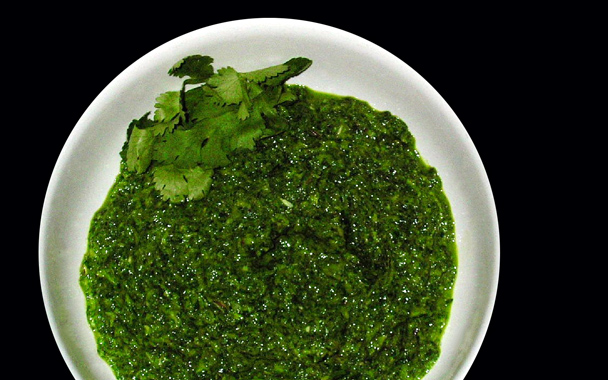A recent visit to Pompeii, along with the discovery that I could still buy the ancient Roman fish sauce called garum, inspired me to attempt an actual Roman meal. Among the ruins I’d seen the marble-countered thermopolia (snack bars), where Romans on holiday ate meat stews, lentils, and salads standing up, and I wanted to check out the food myself. Naturally, I turned to Apicius, a cryptic fourth-century text compiled from several sources. (Confusingly, there were three earlier Roman cooks named Apicius.) The book gives 470 bare-bones recipes that feature luxury ingredients, though curiously, it’s written in a lower-class dialect of Latin, suggesting that it may have very well been the world’s first food porn.
I decided to throw a dinner party featuring Apicius’s recipes, choosing three that seemed the most similar to the food I’d heard described in Pompeii. Going on the tip that the Romans preferred baby animals to mature ones, my main course was a lamb stew. I got a few packages of lamb neck bones and shanks from my local discount butcher, and steamed them in a solution of white wine and olive oil, to which I’d added cilantro, onions, black pepper, cumin, and an amazing amount of garum. I’d been experimenting with garum using just a few drops at a time, but this recipe called for half a bottle! The use of cumin struck me as odd, since the spice is virtually unobtainable in modern Italy. And the recipe also called for lovage, a strongly-flavored weed that looks like anorexic celery. I might have found it in the farmers market were it summer. Instead, I skipped it.
The next recipe was for lentils of no specified variety, so I used the tiny brown sort associated with Castelluccio, Umbria. Here, though, I encountered a stumbling block. The recipe featured all sorts of herbs unknown to modern cooks, including rue seed, mint seed, and pennyroyal. I found the pennyroyal in a shop that specialized in herbal remedies and witch’s potions, but I hesitated to buy it when I saw a sign warning, “Not to be ingested by pregnant women.” While I believe in a woman’s right to choose, I have a rule against cooking with abortifacients. Luckily, the bulk of the recipe required easy-to-find ingredients like leeks, honey, coriander seed, mint, wine vinegar, and, of course, more garum—so I forged ahead.
Though the third and final dish I had chosen was described as a salad, that word meant something very different to the Romans. This recipe called for smashing mint, cilantro, parsley, leeks, and thyme all together in a mortar with fresh cheese. Weird! The recipe additionally included black pepper, vinegar, and olive oil.
The dinner hour arrived and my guests sat down. Though a little strange-tasting—very salty and somewhat fishy—the lamb stew was acceptable, and some guests even sort of praised it. “This is really a fairly normal meat stew!” exclaimed one. The lentils were another story. Though they looked good, the flavor was otherworldly, and not in a pleasant way. One guest spit the first bite out, noting, “Those Romans sure liked strong-tasting stuff.”
The so-called salad I served was a green swamp of herbs dotted with bits of feta, which I’d used knowing the Romans preferred goat’s and sheep’s milk to cow’s. The guests loved it immediately, eagerly calling for more. Who could have imagined fresh mint and cilantro went so well together? Moreover, the recipe could easily accommodate any constellation of herbs or weeds you could forage or buy. Here is a recipe that needs to be brought into the modern world, I concluded. This one’s a keeper.
Roman Salad
1 bunch cilantro, leaves removed and stems discarded
1 bunch flat-leaf parsley, leaves removed and stems discarded
1 bunch mint (peppermint or spearmint preferred), leaves removed and woody stems discarded
5 sprigs thyme, leaves removed and stems discarded
1 thick leek or 2 thin leeks, trimmed of all but 2 inches of green, coarsely chopped
5 tablespoons olive oil
1/4 cup white wine vinegar
1 teaspoon salt
1/4 teaspoon freshly ground black pepper
2 oz feta cheese
- Wash herbs and leeks thoroughly. Place all ingredients except feta cheese in the hopper of a food processor and blend for 30 seconds. Scrape down sides of processor and blend for another 30 seconds, leaving the mixture coarse, but with no large lumps of leek.
- Transfer salad to a bowl, and crumble feta over the top. Stir into the salad until mixed. Check the seasoning and adjust salt as necessary.
Note: Any mixture of herbs and wild edible herbs will work in this infinitely variable recipe.


